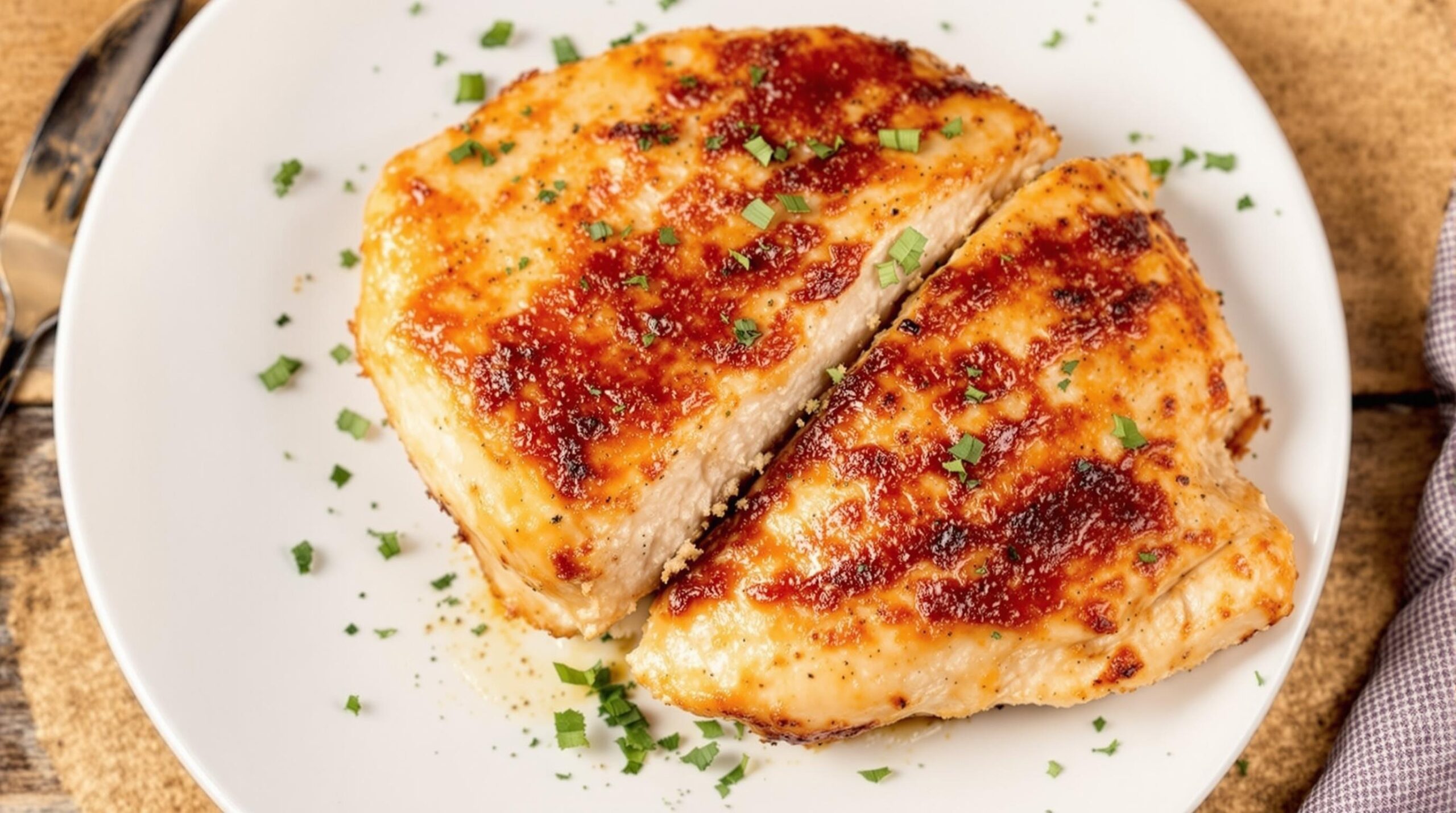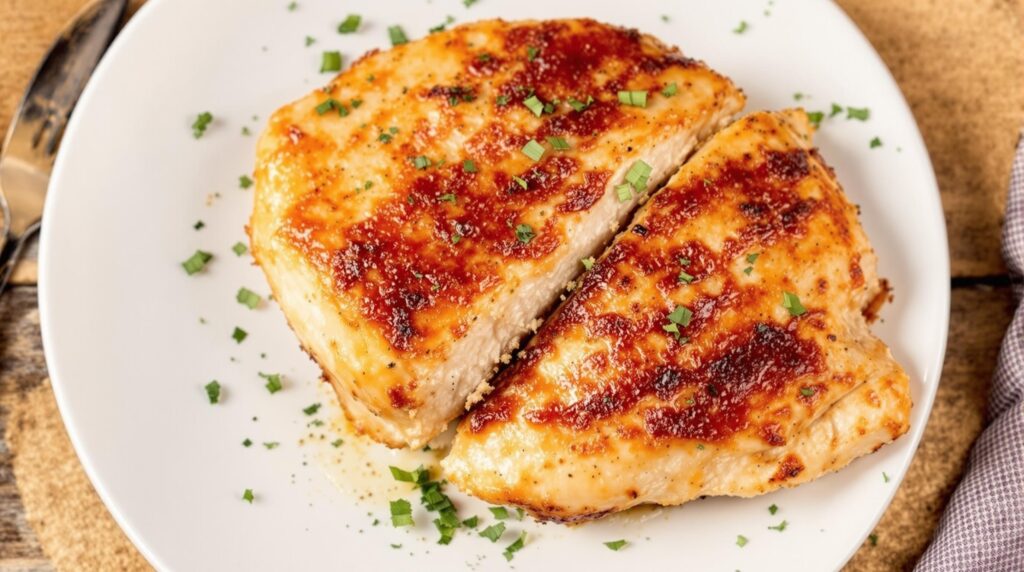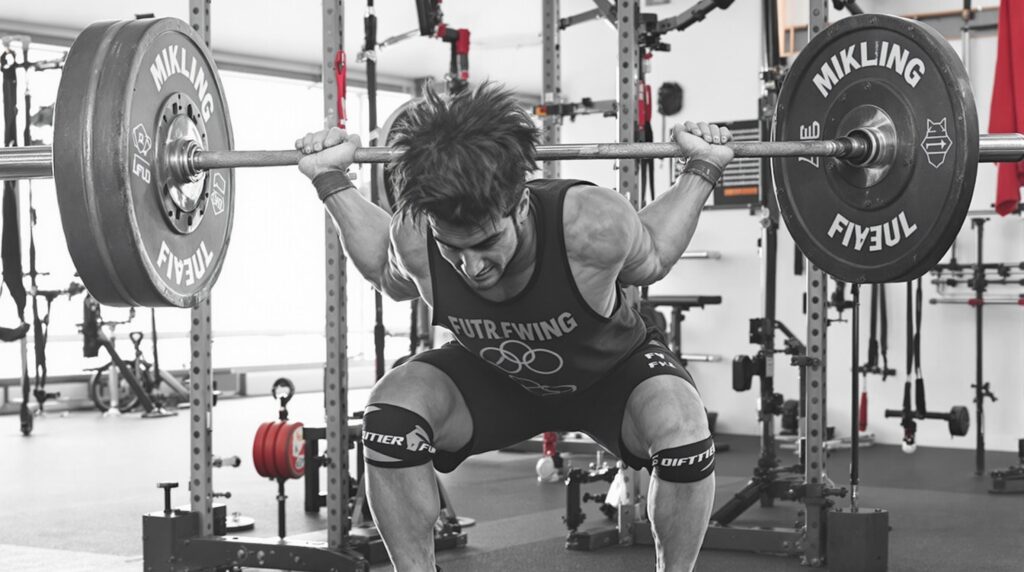Understanding the nutritional profile of 4 ounces chicken breast calories is essential for anyone looking to optimize their health and fitness journey. Chicken breast stands as one of the most efficient protein sources available, offering an exceptional balance of high-quality protein, minimal fat, and relatively low calories that make it ideal for both building muscle and supporting fat loss efforts.
Key Takeaways
- A 4-ounce chicken breast contains approximately 136-171 calories (raw vs. cooked) while delivering 25-31 grams of complete protein
- Chicken breast contains 2.5-2.8 grams of leucine per serving, meeting the threshold needed to maximize muscle protein synthesis
- The high protein content creates a thermogenic effect, burning 20-30% of its calories during digestion compared to just 5-10% for carbs and fats
- Compared to other protein sources, chicken breast offers a superior amino acid profile at fewer calories and lower cost
- Proper cooking methods can preserve nutritional value while minimizing unnecessary added calories from oils and breading
The Nutritional Powerhouse: Understanding Chicken Breast’s Caloric and Macronutrient Profile
When examining the nutritional content of chicken breast, the differences between raw and cooked portions are worth noting. A 4-ounce raw chicken breast contains approximately 136 calories, while the same portion cooked increases to about 171 calories. This caloric difference stems from water loss during cooking, which concentrates nutrients in a smaller volume.
Protein content is where chicken breast truly shines. Each 4-ounce serving delivers 25-31 grams of protein, making up 70-80% of its total caloric value. This protein density makes chicken breast an exceptional choice for anyone following a high-protein fitness nutrition plan.
The fat profile remains impressively low at just 3.6-7.2 grams per serving, with only 1-2 grams coming from saturated fat. For those monitoring carbohydrate intake, chicken breast offers another advantage: it contains zero carbohydrates, making it perfectly suited for low-carb, ketogenic, and other carb-restricted dietary approaches.

Why Chicken Breast Excels for Muscle Growth
The muscle-building benefits of chicken breast stem primarily from its exceptional amino acid profile. Each 4-ounce serving contains 2.5-2.8 grams of leucine, the most important amino acid for triggering muscle protein synthesis. This amount meets the critical 2-3 gram threshold that research from Just Fly Sports shows is necessary to maximize muscle growth signals.
Chicken breast also boasts perfect protein quality scores with a PDCAAS (Protein Digestibility Corrected Amino Acid Score) of 1.0 and a DIAAS (Digestible Indispensable Amino Acid Score) of 1.08. These ratings indicate complete amino acid availability and excellent digestibility compared to plant proteins like tofu (0.6g leucine/100g) or chickpeas (PDCAAS 0.52).
For optimal muscle growth, consuming protein in strategic amounts throughout the day matters as much as total intake. According to research cited by MacroFactor, aim for 0.4-0.5g protein per kg bodyweight per meal, which translates to 30-40g for a 75kg (165lb) person. A single 4-ounce serving of chicken breast nearly fulfills this requirement, making it a convenient cornerstone for muscle-building meal plans.
Chicken Breast: Your Ally for Fat Loss
Beyond muscle growth, chicken breast offers remarkable benefits for fat loss. High-protein meals increase fullness by 25-30% compared to high-carb alternatives, as reported by Diet Doctor. This enhanced satiety effect helps naturally reduce calorie intake without constant hunger.
The thermic effect of food (TEF) represents another significant advantage. Protein requires 20-30% of its calories just for digestion and processing, compared to only 5-10% for carbohydrates and fats. For a 4-ounce chicken breast providing approximately 170 calories, this metabolic boost burns an extra 34-51 calories during digestion alone.
Clinical studies from the National Institutes of Health demonstrate that high-protein diets produce impressive fat loss results. Participants following protein-rich eating plans showed 3.3-3.7kg fat reduction over 12 weeks while preserving lean muscle mass. This body composition improvement occurs because protein:
- Modulates ghrelin, your primary hunger hormone
- Increases peptide YY, a hormone that signals fullness
- Creates a metabolic advantage of 100-200 extra calories burned daily
- Preserves muscle tissue during caloric deficits
Chicken Breast vs. Other Protein Sources
When compared to other protein options, chicken breast offers compelling advantages. Versus beef sirloin, chicken provides similar protein content with 25% fewer calories and 50% less saturated fat. While beef offers more iron and zinc, chicken’s leaner profile makes it ideal for calorie-controlled diets.
Plant proteins require significantly larger portions to trigger muscle protein synthesis due to their lower leucine content. For example, you’d need approximately four times more tofu than chicken breast to get the same leucine amount needed to stimulate muscle growth.
From an economic standpoint, chicken breast costs $4.93-$5.31 per pound versus $5.29-$7.99 for ribeye steak according to USDA data. This 30-40% cost difference makes chicken breast a budget-friendly protein option for consistent consumption, particularly important for those following muscle growth and fat loss regimens that require higher protein intake.
Optimal Cooking Methods for Maximum Benefits
How you prepare chicken breast significantly impacts its nutritional profile. Grilling preserves 56.6g protein per 284-calorie serving, while fried chicken delivers only 34.8g protein at a higher 364 calories, according to January AI. This preparation difference can affect your results dramatically over time.
Air frying has emerged as an excellent cooking method, reducing oil use by 70-80% while maintaining the favorable calorie profile of chicken breast. As Lara Clevenger notes, a properly air-fried chicken breast closely matches the nutritional value of grilled chicken without added fats.
Be mindful of what you add to your chicken. Heavy marinades can add 50-100 calories per serving, while breading or frying adds 10-15g carbs and 8-10g saturated fat. Instead, consider these flavor-enhancing options with minimal caloric impact:
- Herb-based dry rubs (rosemary, thyme, oregano)
- Citrus juice marinades (lemon, lime)
- Garlic, onion powder, and paprika combinations
- Salt-free seasoning blends
For accurate tracking, weigh chicken raw before cooking and account for the approximately 25% weight reduction that occurs during preparation.
Daily Protein Requirements and Strategic Chicken Breast Consumption
To maximize muscle growth while supporting fat loss, aim for 1.6-2.2g protein per kg bodyweight daily. For a 150lb (68kg) person, this translates to 109-150g protein—an amount that 4 ounces chicken breast calories can help fulfill efficiently.
According to BBC Good Food, spreading protein intake across 4-5 daily meals, each containing 25-40g protein, optimizes muscle protein synthesis throughout the day. A 4-ounce portion of chicken breast fits perfectly within this strategy, providing approximately 30g protein per serving.
Post-workout nutrition timing remains important. Consume chicken breast within 2 hours after exercise, ideally paired with about 40g of carbohydrates to maximize glycogen replenishment and enhance the muscle-building response. This boosts workout performance and accelerates recovery.
Practical Meal Prep and Diet Integration
Incorporating chicken breast into various dietary approaches remains straightforward thanks to its versatility. Batch-cooking 4-ounce portions can save considerable time while ensuring consistent nutrient intake throughout the week.
For balanced meals that support both muscle growth and fat loss, pair chicken breast with:
- Complex carbs like quinoa (8g protein/185 kcal)
- Fibrous vegetables like broccoli (2.5g protein/30 kcal)
- Healthy fats from avocado or olive oil
To enhance the anabolic effect, consider combining chicken breast with other leucine-rich foods such as Greek yogurt (0.9g leucine/100g) or cottage cheese. This approach creates complementary protein sources that maintain elevated muscle protein synthesis between meals.
Chicken breast’s zero-carb profile makes it ideal for various dietary approaches including ketogenic, paleo, Mediterranean, and high-protein plans. Its versatility allows for adaptation to almost any nutritional framework while maintaining its core benefits.
The Body Transformation Effect
The combined effect of strategic chicken breast consumption alongside proper training creates a powerful body recomposition effect. The high protein content stimulates muscle hypertrophy while the favorable calorie-to-protein ratio supports simultaneous fat reduction.
Clinical outcomes from the National Institutes of Health demonstrate that high-protein diets (30% of calories from protein) outperform high-carb diets by approximately 50% in fat loss efficiency. This difference occurs while preserving or even increasing lean muscle mass—a crucial factor for long-term metabolic health.
The muscle-sparing effect proves particularly important during caloric deficits. When losing weight, the body typically breaks down both fat and muscle tissue. However, adequate protein intake from sources like chicken breast can nearly eliminate muscle loss, ensuring that weight reduction comes primarily from fat stores.
Over time, this body composition improvement creates a virtuous cycle: increased muscle mass raises basal metabolic rate, making continued fat loss easier while improving strength, appearance, and overall health markers.



